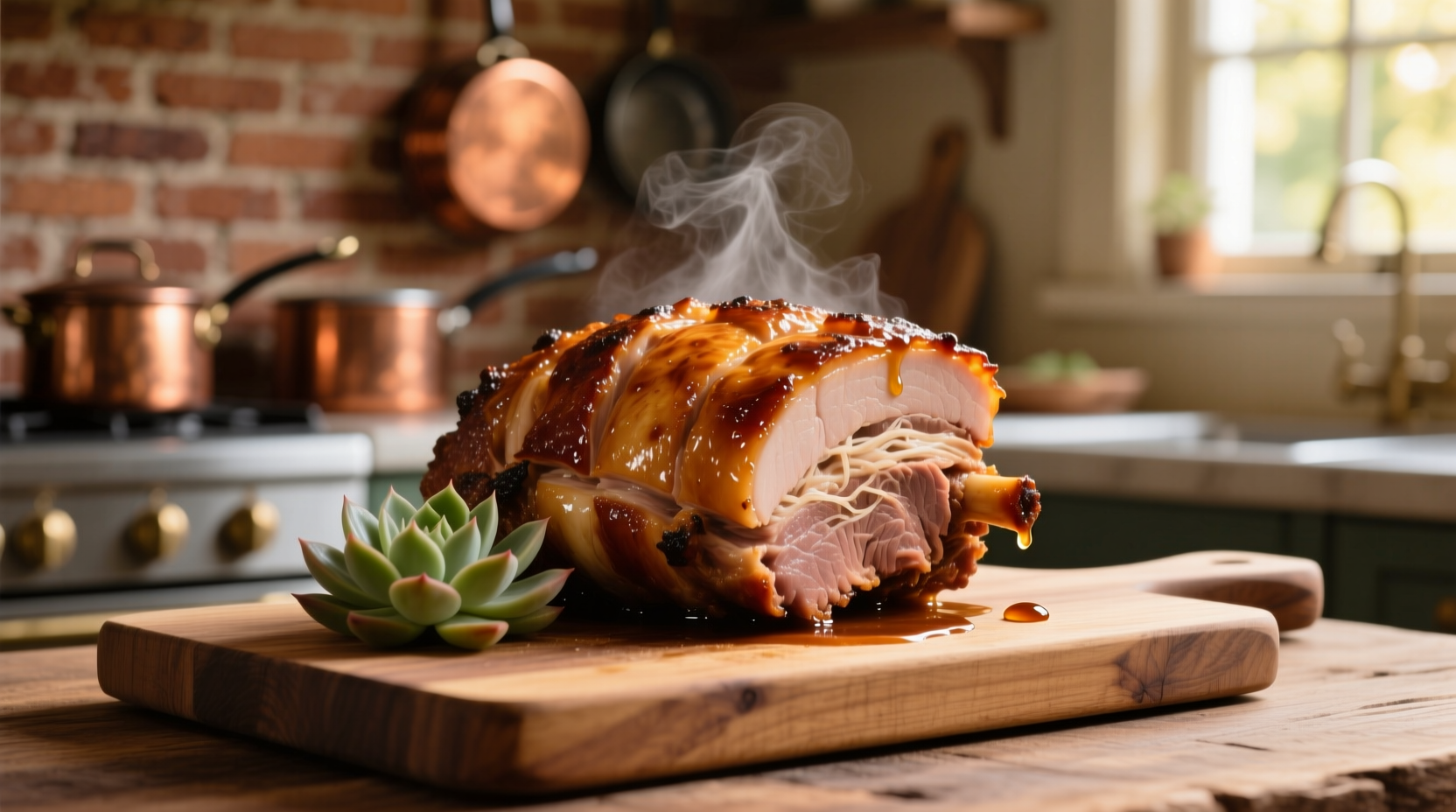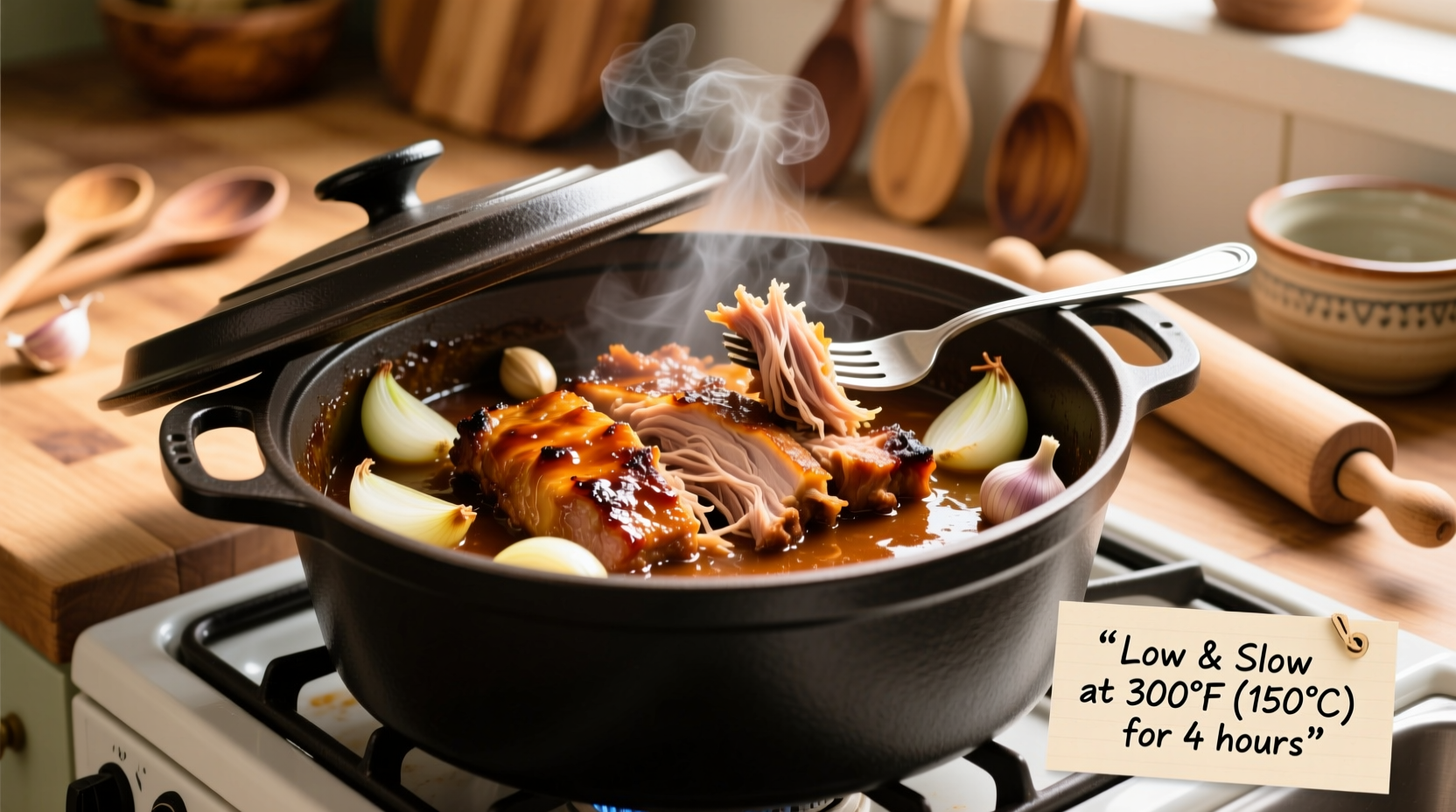Why Oven Pulled Pork Beats Other Methods
While smokers and slow cookers dominate pulled pork conversations, your conventional oven delivers unmatched precision for this beloved barbecue staple. The controlled environment prevents drying while maintaining consistent low temperatures essential for collagen breakdown. Professional pitmasters often use ovens for competition BBQ when weather interferes with smoking - proof of this method's reliability.
Essential Equipment Checklist
- Oven-safe roasting pan with tight-fitting lid or heavy-duty foil
- Meat thermometer (instant-read and leave-in probe recommended)
- Sharp boning knife for trimming
- Wire cooling rack for proper air circulation
- Two sturdy forks or specialized pork claws for shredding
Selecting Your Foundation: Pork Cuts Compared
| Cut Type | Fat Content | Best For Oven? | Price per Pound |
|---|---|---|---|
| Pork Shoulder (Boston Butt) | 25-30% | ★★★★★ | $3.50-$4.50 |
| Picnic Roast | 20-25% | ★★★☆☆ | $2.75-$3.50 |
| Whole Pork Loin | 10-15% | ★☆☆☆☆ | $4.00-$5.50 |
| Pre-Marinated Options | Varies | ★★☆☆☆ | $5.00-$6.50 |
Based on USDA Food Safety and Inspection Service guidelines, pork shoulder (specifically the Boston Butt portion) provides optimal marbling for pulled pork. The higher fat content slowly renders during cooking, basting the meat internally while collagen transforms into gelatin between 160-205°F - the critical temperature range for tender results (USDA FSIS, 2023).

The Science-Backed Cooking Process
Preparation Phase (20 Minutes)
- Trim excess fat cap to ¼-inch thickness (leaving some fat ensures moisture)
- Mix dry rub: 2 tbsp brown sugar, 1 tbsp smoked paprika, 1½ tsp each garlic powder, onion powder, salt, and black pepper
- Generously coat all surfaces, pressing spices into meat
- Refrigerate uncovered for 1-24 hours (enhances flavor penetration)
Cooking Phase (6-8 Hours)
Preheat oven to 275°F - the ideal temperature where collagen breaks down without boiling the meat. Place pork fat-side up on a wire rack in roasting pan. Add 1 cup liquid (apple juice or broth) to pan bottom. Cover tightly with foil.
Monitor internal temperature using a probe thermometer. The critical collagen-to-gelatin transformation occurs during the "stall" phase between 150-170°F where evaporation cools the meat. Resist opening the oven during this period - patience yields superior results.
Resting & Shredding (60+ Minutes)
When internal temperature reaches 195-205°F, remove from oven and rest undisturbed for 60-90 minutes. This allows juices to redistribute and fibers to relax. Never skip this step - premature shredding causes moisture loss.
Shred using two forks, discarding large fat pockets. For authentic texture, pull with the grain rather than across it. Mix with ½ cup of reduced cooking liquid for perfect moisture balance.
Troubleshooting Common Issues
- Dry results: Oven temperature too high or insufficient resting time. Maintain 275°F max and rest minimum 60 minutes.
- Tough texture: Undercooked - continue cooking until probe inserts with no resistance. Don't rely solely on time.
- Bland flavor: Insufficient seasoning time. Allow rub to penetrate 4+ hours before cooking.
- Excess fat: During shredding, place meat in a colander to drain while collecting usable cooking liquid.
Serving & Storage Guidelines
For competition-style presentation, serve on brioche buns with tangy vinegar-based slaw. Leftovers store well for up to 4 days refrigerated or 3 months frozen. Reheat gently with reserved cooking liquid to maintain moisture - never microwave dry.
When Oven Method Shines
This technique excels when outdoor smoking isn't possible or when precise temperature control matters most. It's ideal for beginners learning pulled pork fundamentals since ovens eliminate weather variables that complicate smoking. However, for authentic smoky flavor, add 1-2 tbsp liquid smoke to your cooking liquid or finish under the broiler with wood chips.











 浙公网安备
33010002000092号
浙公网安备
33010002000092号 浙B2-20120091-4
浙B2-20120091-4